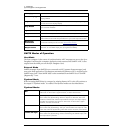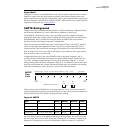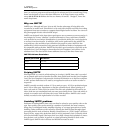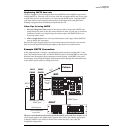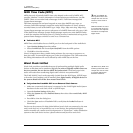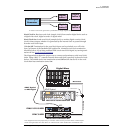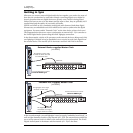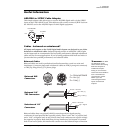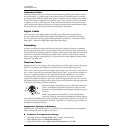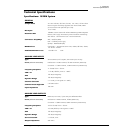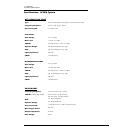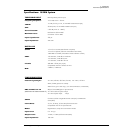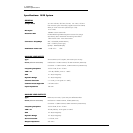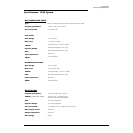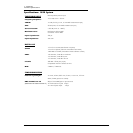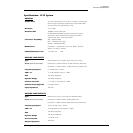
7 - Appendix
Useful Information
102 Creative Professional
Unbalanced Cables
Unbalanced cables have one conductor and one ground (shield) and usually connect
via unbalanced 1/4" phone plugs or RCA phono plugs. The shield stays at a constant
ground potential while the signal in the center conductor varies in positive and negative
voltage. The shield completely surrounds the center “hot” conductor and is connected
to ground in order to intercept most of the electrical interference encountered by the
cable. Unbalanced cables are more prone to hum and interference than balanced cables,
but the shorter the cable, the less hum introduced into the system.
Digital Cables
Don’t cheap out! Use high quality optical fiber (for ADAT) and low-capacitance
electrical cables (for S/PDIF) when transferring digital I/O to avoid data corruption.
It’s also a good idea to keep digital cabling as short as possible (1.5 meters for plastic
light pipes; 5 meters for high quality glass fiber light pipes).
Grounding
In order to obtain best results and lowest noise levels, make sure that your computer
and any external audio devices are grounded to the same reference. This usually means
that you should be using grounded AC cables on both systems and make sure that both
systems are connected to the same grounded outlet. Failure to observe this common
practice can result in a ground loop. 60 cycle hum in the audio signal is almost always
caused by a ground loop.
Phantom Power
Phantom power is a dc voltage (+48 volts) which is normally used to power the pream-
plifier of a condenser microphone. Some direct boxes also use phantom power.
Pins 2 and 3 of the AudioDock microphone inputs each carry +48 volts dc referenced to
pin 1. Pins 2 and 3 also carry the audio signal which “rides” on top of the constant 48
volts DC. Coupling capacitors at the input of the AudioDock block the +48 volt DC
component before the signal is converted into digital form. The audio mutes for a
second when phantom power is turned on. After turning phantom power off, wait two
full minutes before recording to allow the DC bias to drain from the coupling capacitors
or this bias could affect the audio headroom.
Balanced dynamic microphones are not affected by phantom
power. An unbalanced dynamic microphone may not work
properly, but will probably not be damaged if phantom power
is left on.
Ribbon microphones should NOT be used with phantom
power on. Doing so can seriously damage the ribbon element.
Since ribbon microphones are fairly specialized and generally expensive, you’ll know if
you own one. Most microphones are either of dynamic or condenser type and these are
not harmed by phantom power.
Appearance Settings in Windows
Adjusting the “Performance Options” in Windows will improve the screen appearance
when moving the mixer around on the screen.
To Improve the Appearance Settings:
1. Open the Windows Control Panel. (Start, Settings, Control Panel).
2. Select System. Select the Advanced Settings tab.
3. Under Visual Effects, select Adjust for Best Performance. Click OK.
1
(grd)
3
2
+48
V



